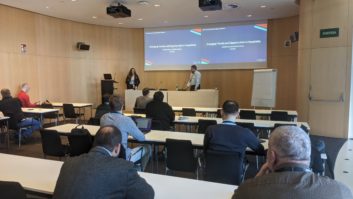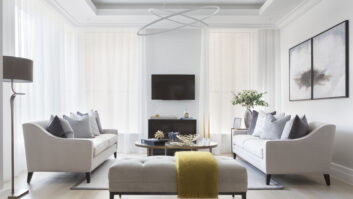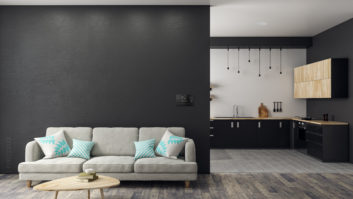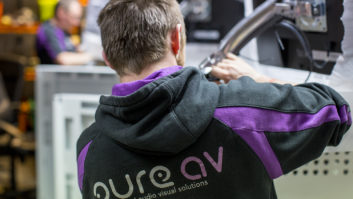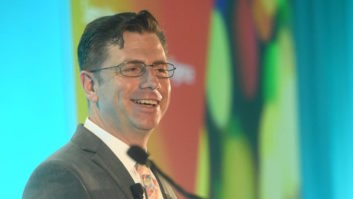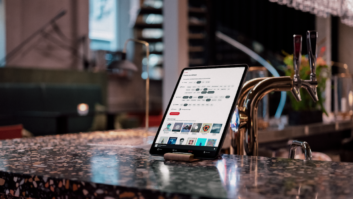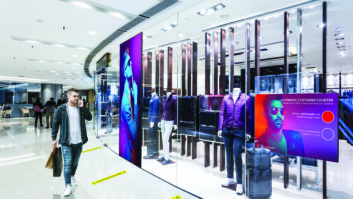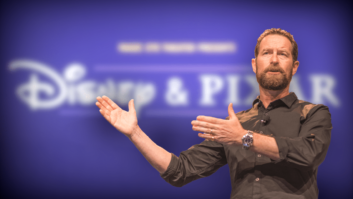Moran Bewley Hotels, pic: Newbery Smith Photography
The latest lamp technology is allowing architects to create innovative solutions to both interior and exterior lighting schemes. TFA shines a light on what’s new. Hotels use lighting in many different ways to differentiate themselves from their competitors, reduce energy and create impact. The latest LED lamp technology continues to drop in price and increase in efficiency, creating opportunities for architects to offer their services to clients in the hospitality sector. Switching to Philips MasterLED lamps has afforded the Moran & Bewleys group of hotels (pictured, top) an impressive 80% energy saving on their electricity expenditure. Following consultation with Philips, which has already successfully supplied TVs to the chain, it was decided to install the latest generation of LED lamps in order to improve energy efficiency and reduce the carbon footprint as part of the Group’s commitment to minimising its environmental impact.
Indeed, the Moran & Bewleys Hotel Group has set an impressive standard for other hotels to follow, especially given that estimates show that 6 billion Euros could be saved within the hotel sector globally simply by switching from old to newer lighting technologies. As Michael Moran, project development director for the Group, explains: “Running a hotel is an around-the-clock operation. Because it is 24/7, it is hardly surprising that electricity costs are high but equally we realised that this offers the most scope from switching to sustainable solutions.
“We were keen to adopt the MasterLED lamps as we felt they would make a major contribution to our objective with a fast return on investment but at the same time still provide a great quality of light. After all, every element of our guest experience is vital to us and the lighting has to reflect and support this.”
Uniquely, the project uses just one single lamp type, the 7W MasterLED lamp, across five of the Group’s hotels yet has made such significant inroads in reducing energy consumption from this switch. This clearly demonstrates that deciding to adopt new energy efficient technology can be both extremely simple and effective. The lamps are easily retrofitted into existing fittings.
Where lighting usage is high, around 18 to 24 hours per day, the payback for MasterLED lamps is estimated to be less than one year. This combined with high light quality makes for a compelling argument for any hotelier keen to improve their bottom line but still maintain the ambience guests expect of a top quality hotel. In all, some 5000 GU10 7W lamps, the equivalent of 50 Whalogens, have been installed. As well as reducing energy consumption, the lamps have an average life of 40,000 hours. This is significant since this is 20 times as long as the halogen lamps which are conventionally used in hotel applications. This means that the Group will also benefit from reduced maintenance costs and do not have to worry about replacing light bulbs all the time.@page_break@Hotel Botánico in Puerto de la Cruz, Tenerife (pictured, above) belongs to ‘The Leading Hotels of the World’ chain, which unites the 300 best and most iconic hotels across the globe. The 5-star luxury hotel turned to Philips to replace its 50 W dichroic halogen lights, with standard transformers, which required a high level of maintenance and resulted in high energy costs. The hotel management, conscious of the savings potential of using new technologies, wanted to undertake a mass replacement of more than 6,000 light points to minimize its energy and operating costs.All existing halogen bulbs located in different areas of the hotel: corridors, rooms, meeting rooms, foyer, etc, have been replaced with Philips MasterLED spots MV GU10 7W. This change has resulted in a reduction in energy consumption of more than 85% for each replaced light fitting (7 W vs 50 W lamp + 10 W transformer). The additional benefits of the changeover include virtually zero maintenance (the new lamps have an operating life of 40,000 hours compared with 2,000 hours for the dichroic halogen bulbs) and a reduction in the amount of heat generated, which directly affects the use of air conditioning (for example leading to a temperature reduction in the rooms of 2 to 3 degrees following the replacement of the light sources). The ambience in the hotel has also improved as there are no longer visible blown-out bulbs and the heat generated by these bulbs has been reduced.@page_break@
The Bella Sky Comwell Hotel in Copengagen, Denmark (left) used LED lighting in a totally different way: to draw attention to the architecture and attract custom.
“We’d reached a stage in the building of the Bella Sky Comwell Hotel where a lot of people were beginning to wonder what we were actually doing,” says Arne Bang Mikkelsen, executive director of Bella Center. “Then I got the idea of publicizing the new hotel by focusing on architect 3XN´s fantastic design, and as the nights were drawing in, we decided to have the hotel floodlit after dark, preferably in a way that was as unconventional as the building.” Comtech, which provides technical solutions for conferences, exhibitions, concerts and festivals, was chosen as the partner for the project. “I talked to Morten Topp from Comtech, who came up with a number of proposals and models for illuminating the façade,” says Mikkelsen. “The building is always surprising, both from a distance and from close-to,” says Topp. “We wanted the lighting to reflect this surprising and innovative design. Philips told me about the new ColorReach Powercore fixtures, which had never been used in Denmark before. Luckily Philips managed to deliver 18 fixtures at very short notice. Without them, we’d never have been able to put our idea into practice.” ColorReach Powercore fixtures have a light output powerful enough to illuminate large areas and structures with even colour from a considerable distance. They can be used both inside and outdoors, their energy consumption is low, and the LED module life of up to 90 000 hours helps to reduce maintenance costs. The fixtures are extremely reliable, and although they weigh about 40 kilos, strong mounting brackets and flexible stands make them easy to set-up and install. “It was a good investment: now everyone knows we’ve opened a quite extraordinary hotel,” Mikkelsen concludes.
